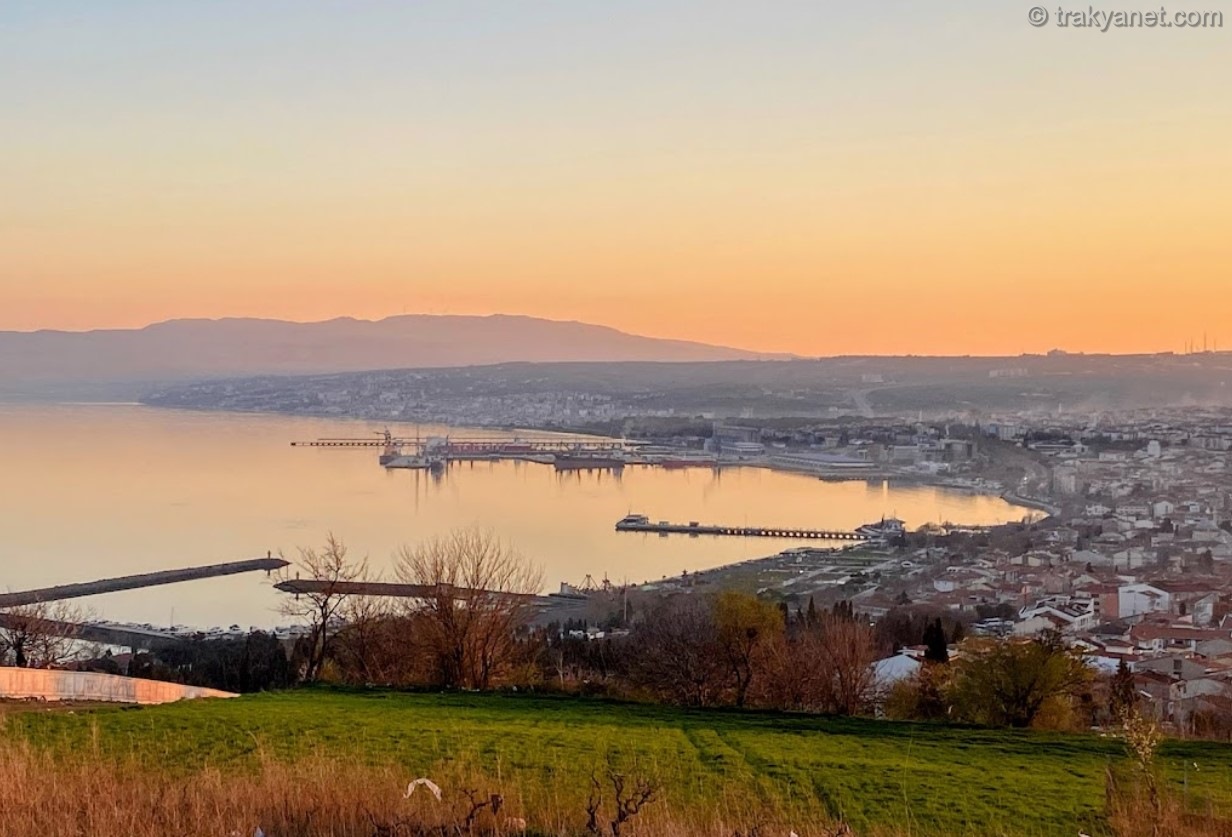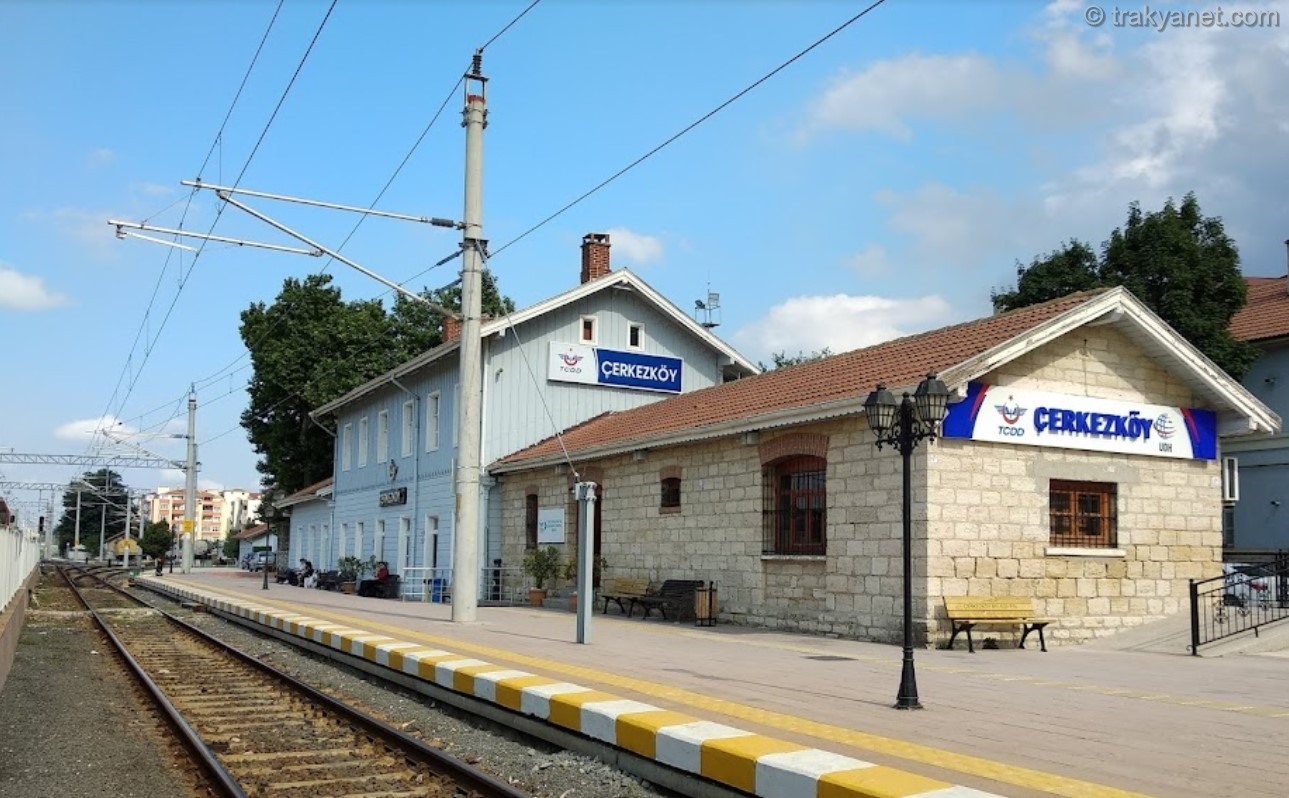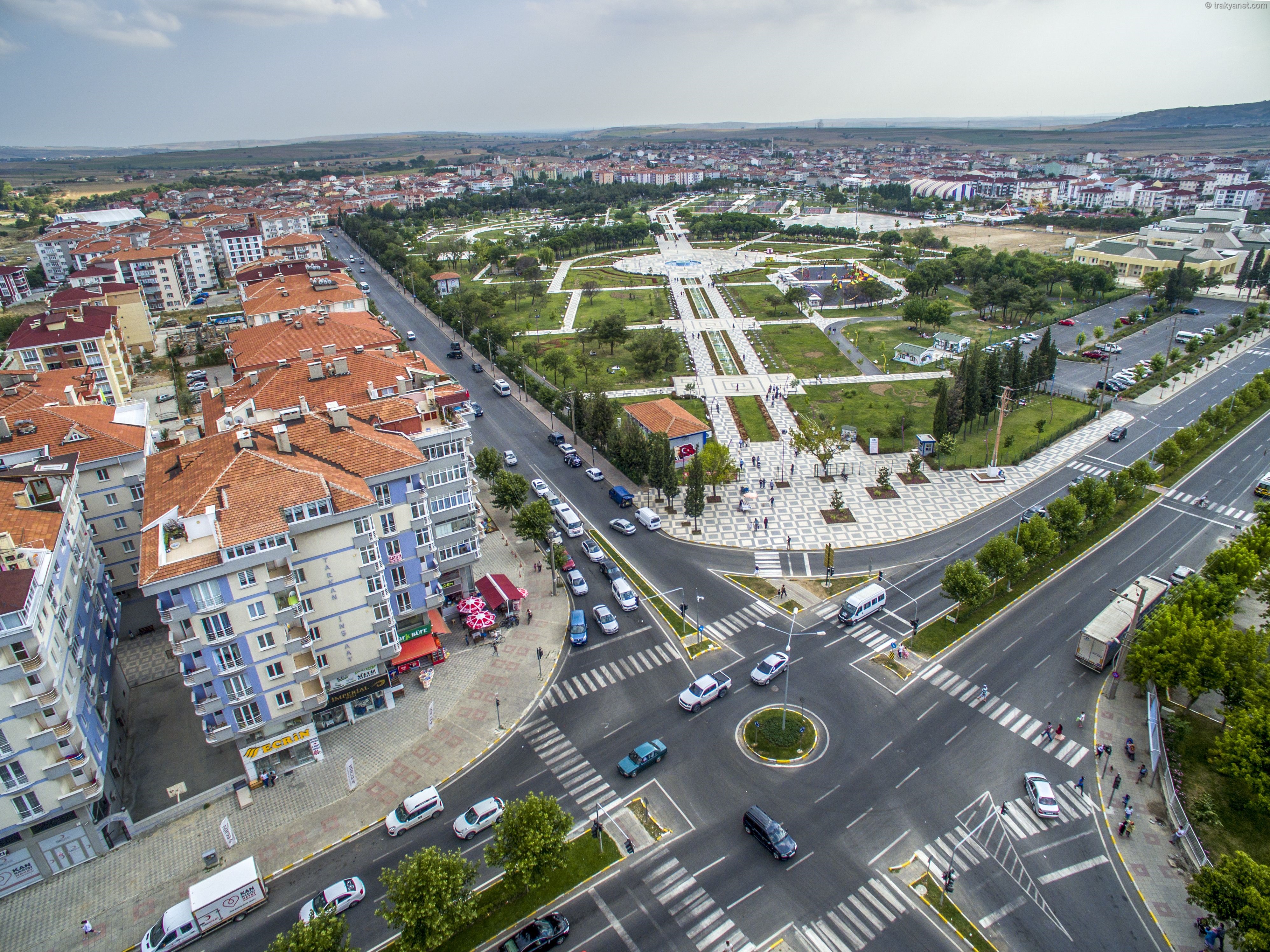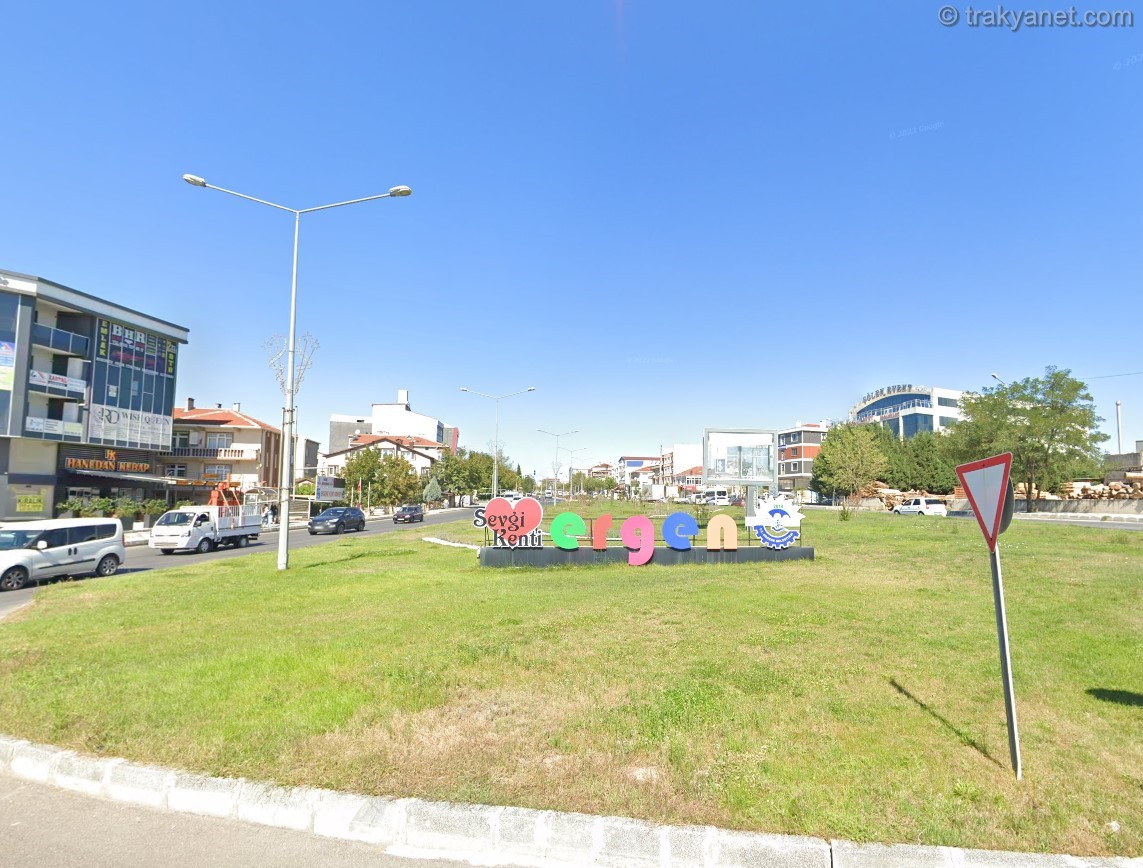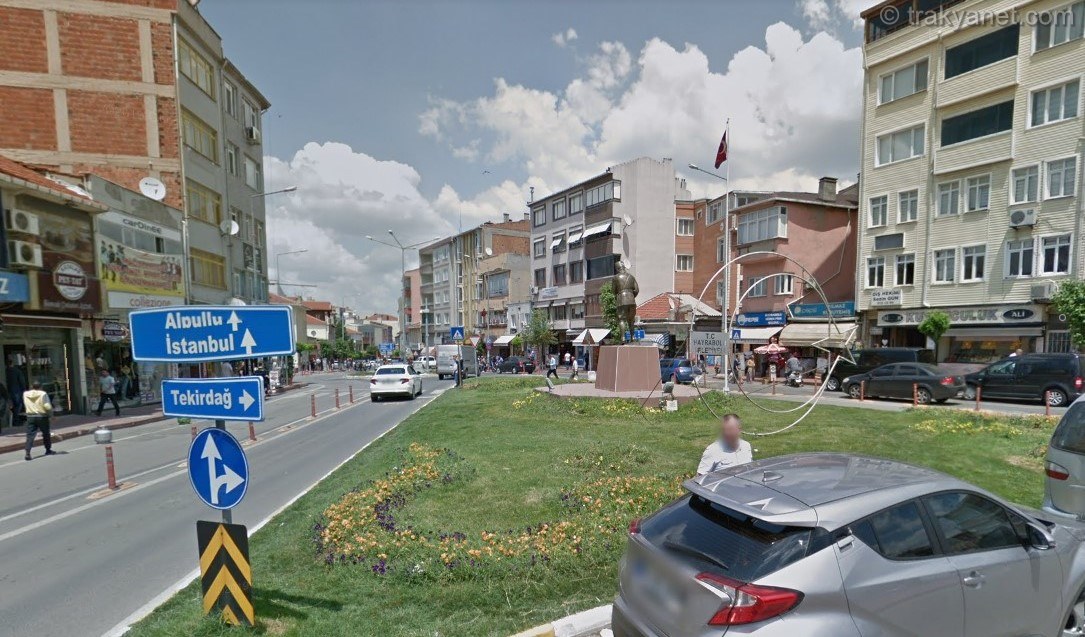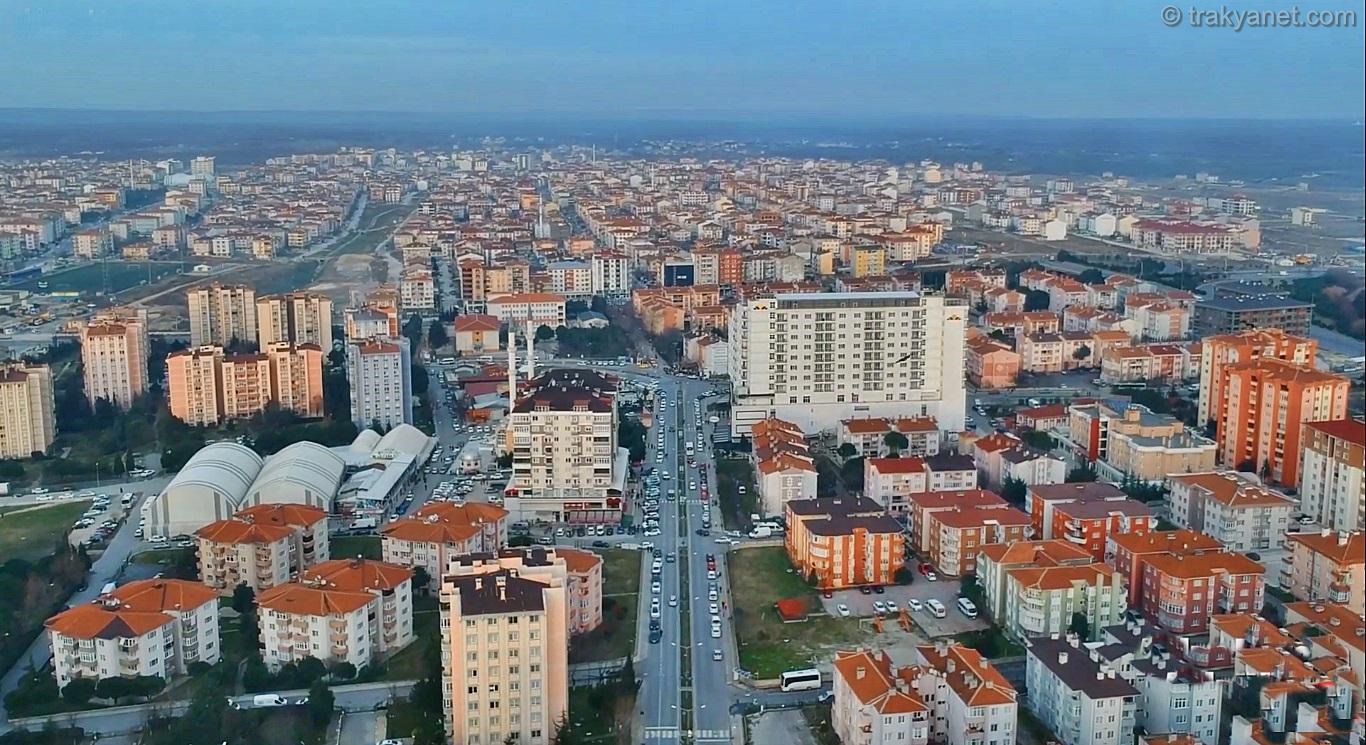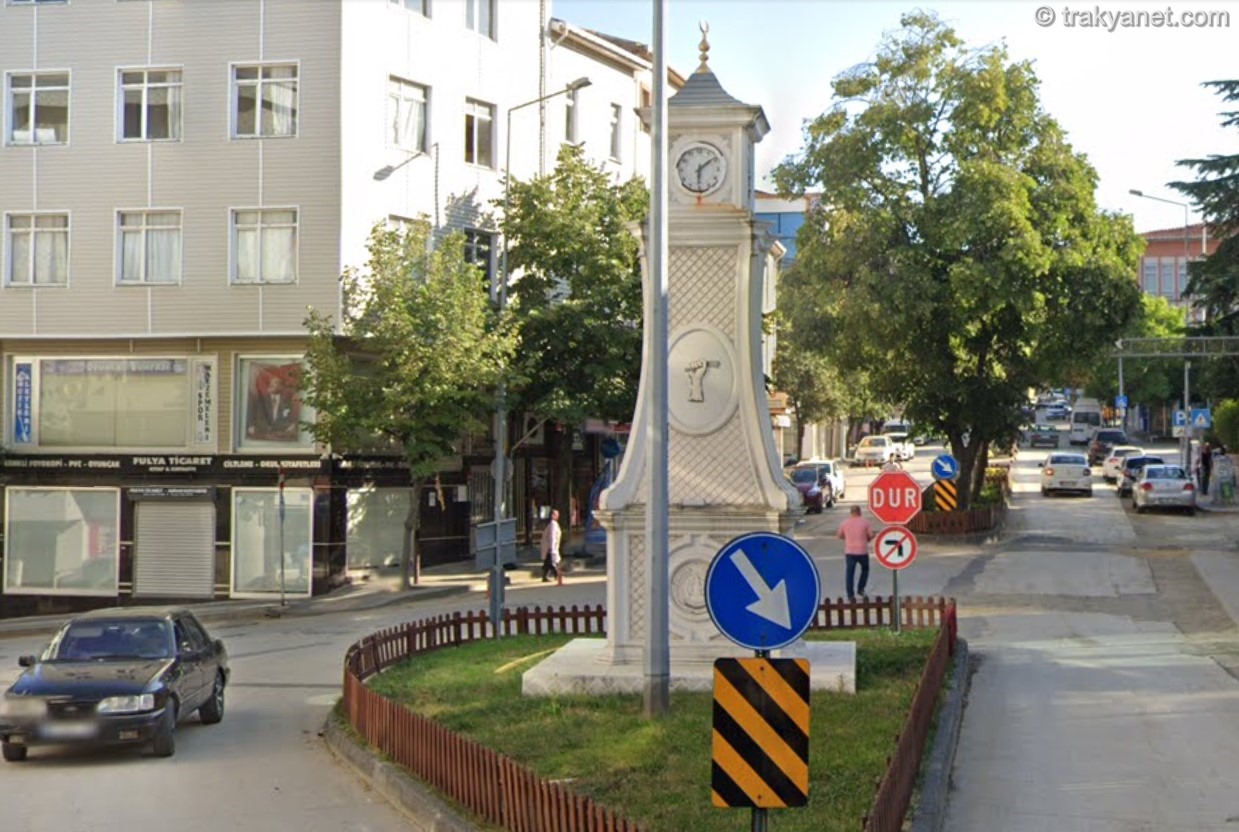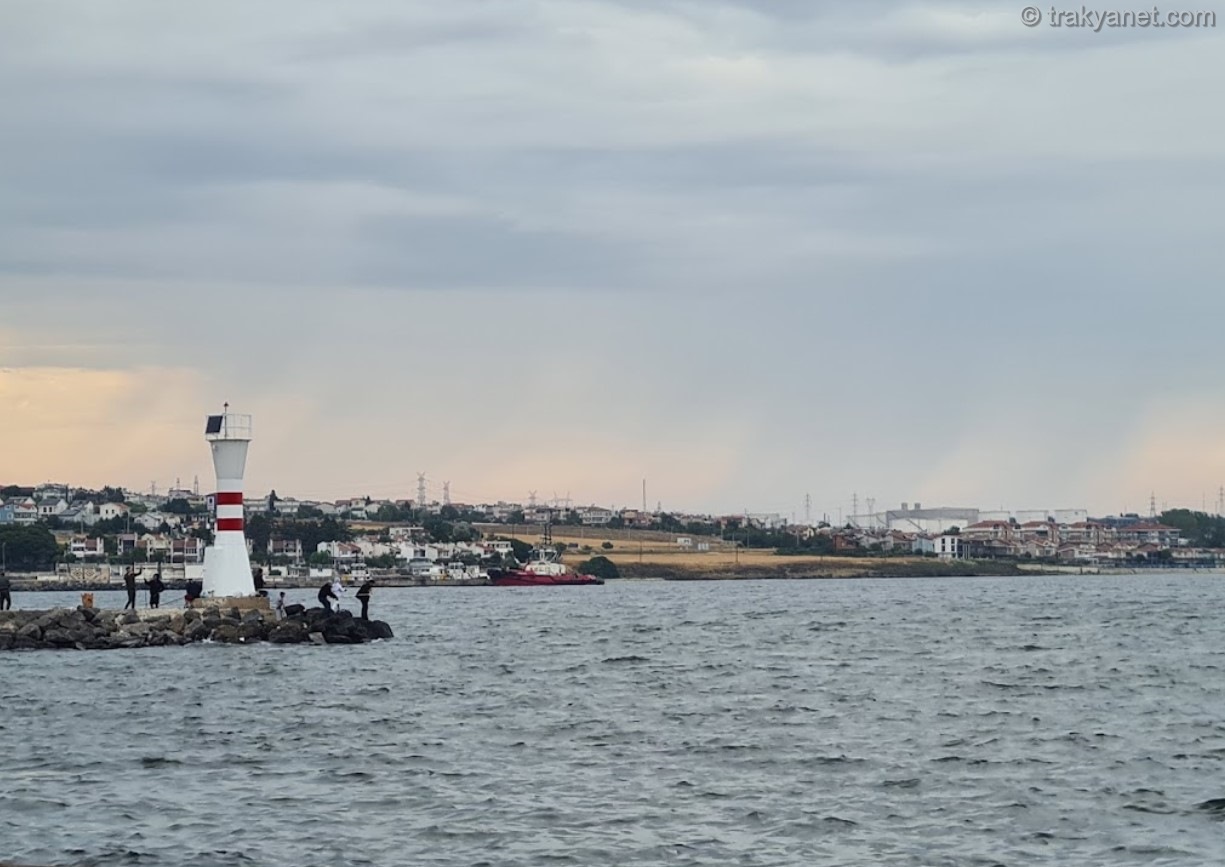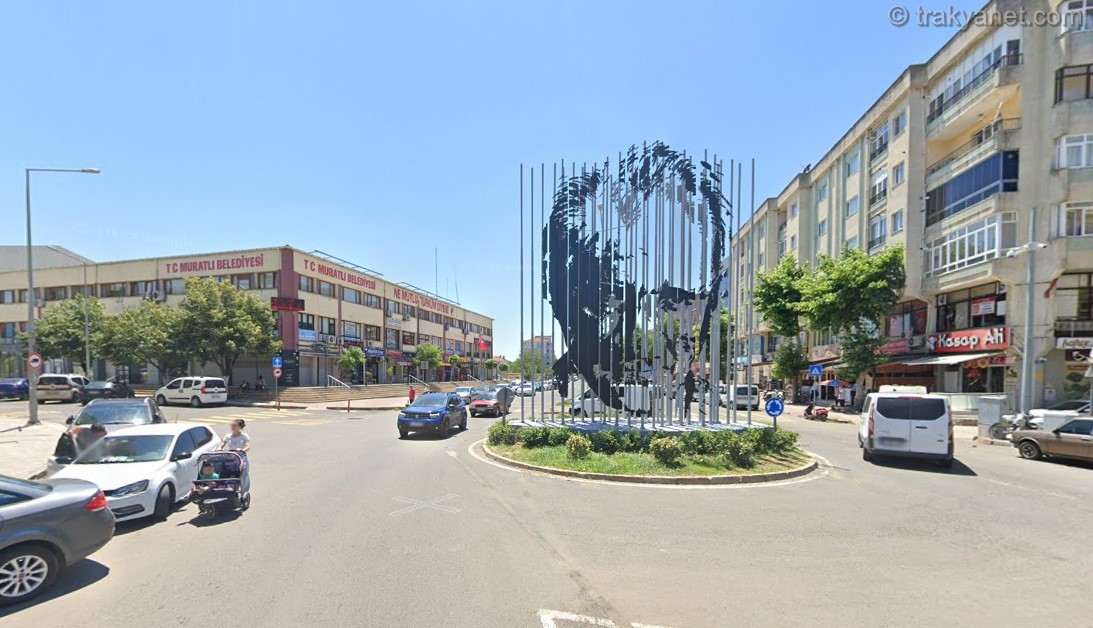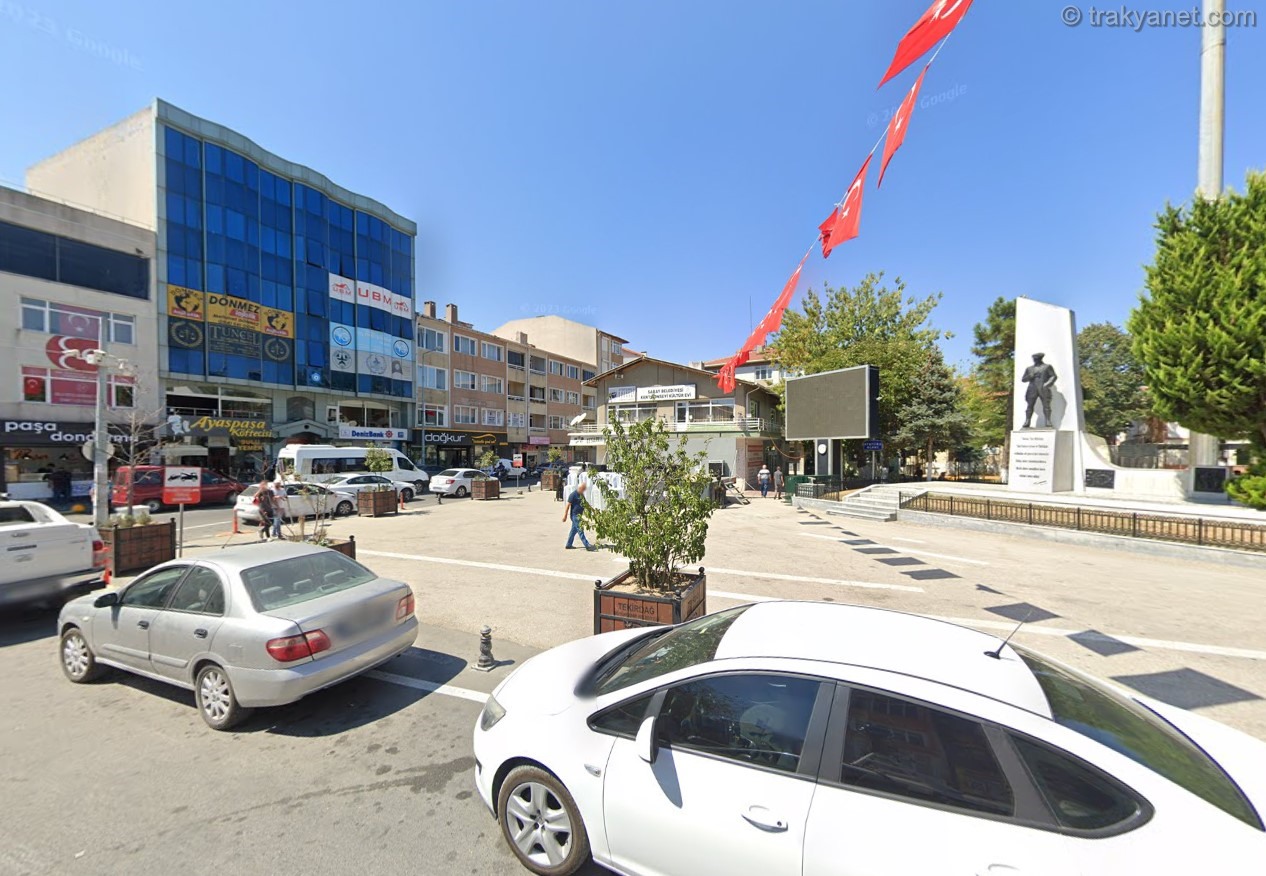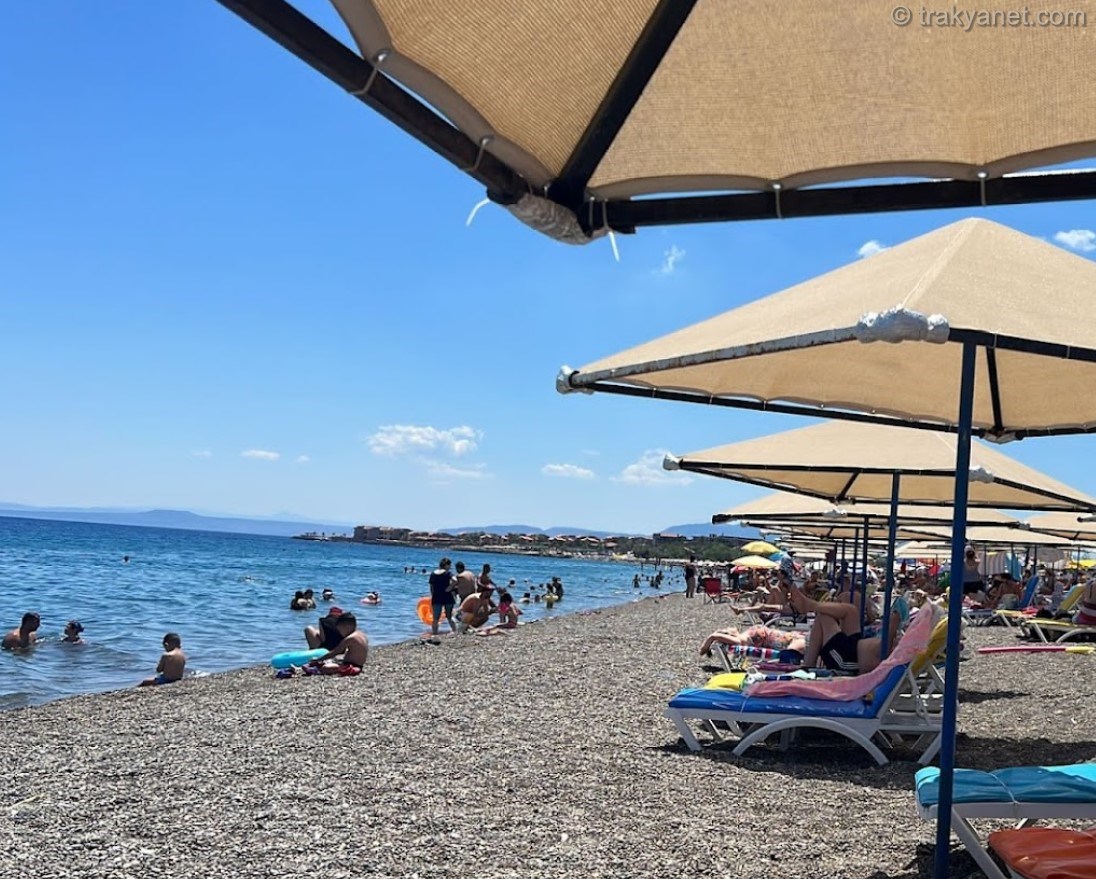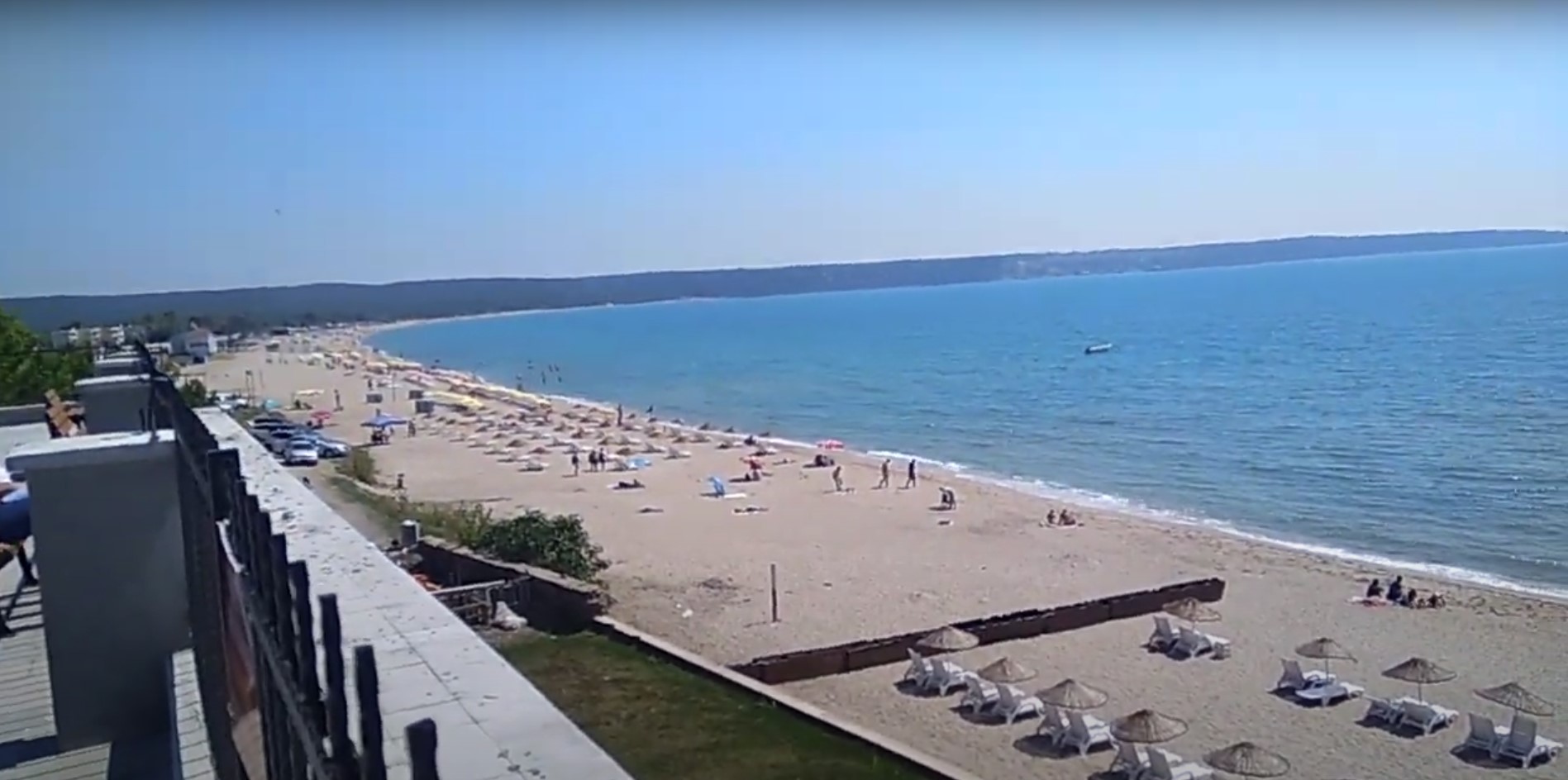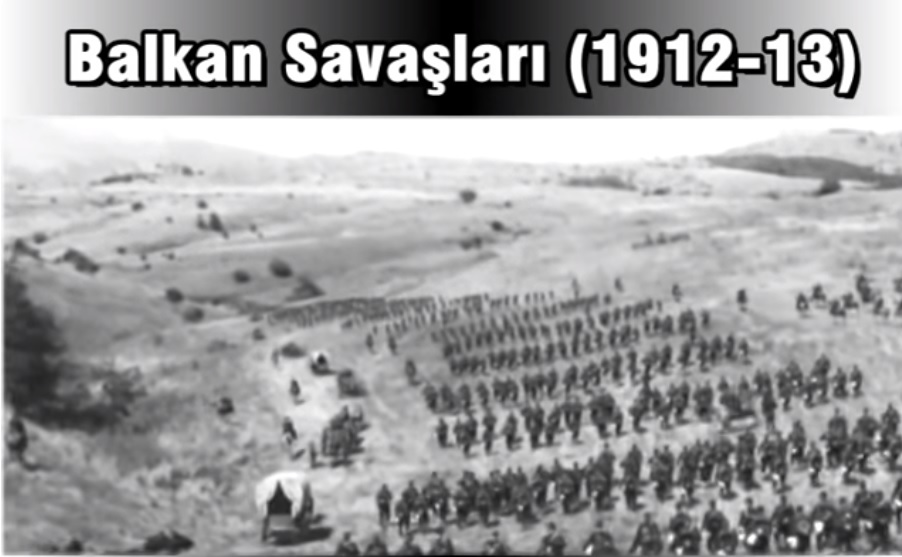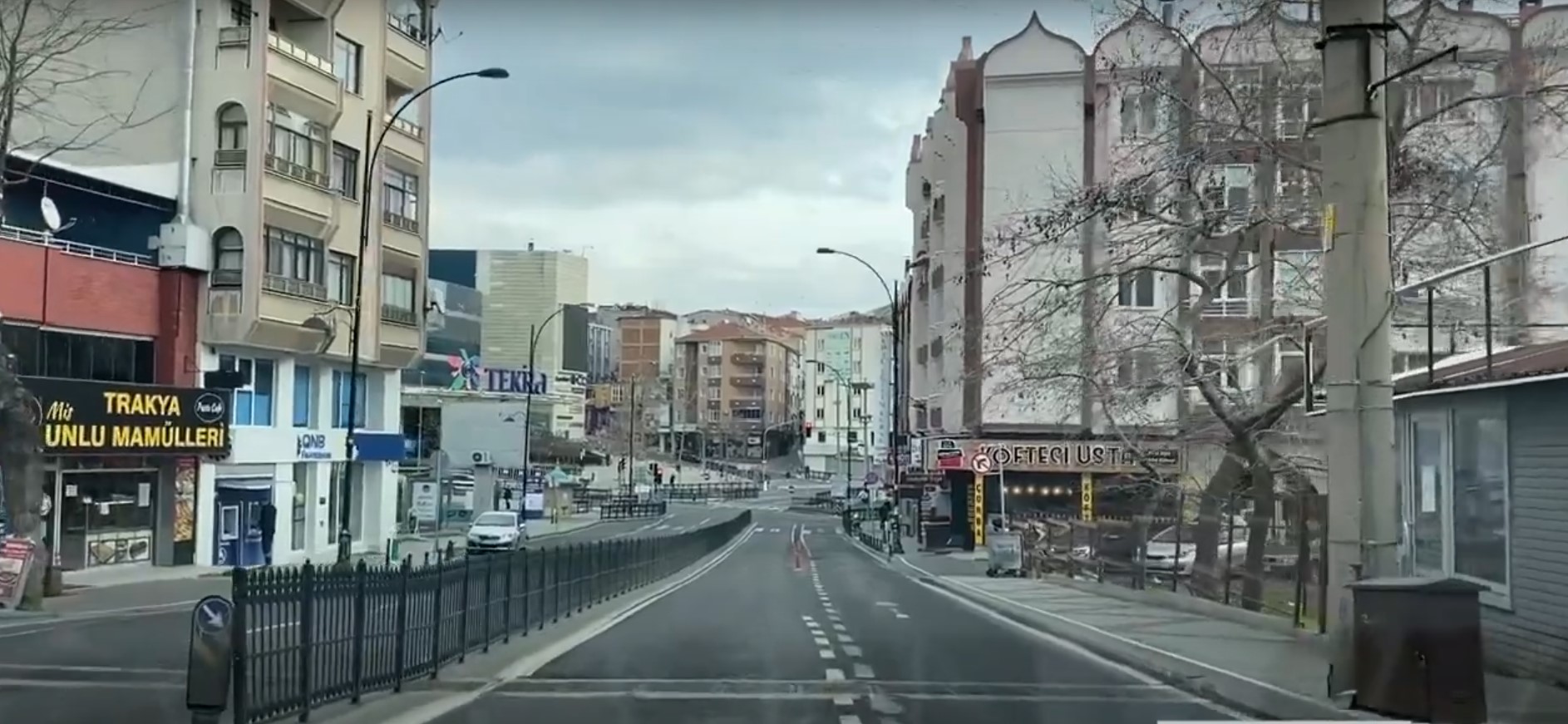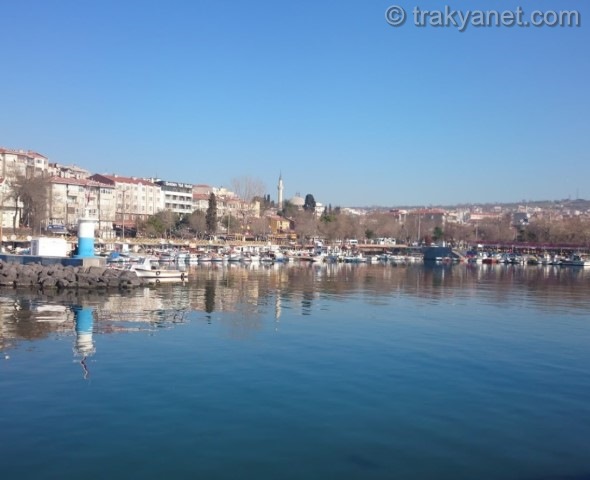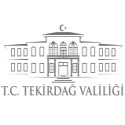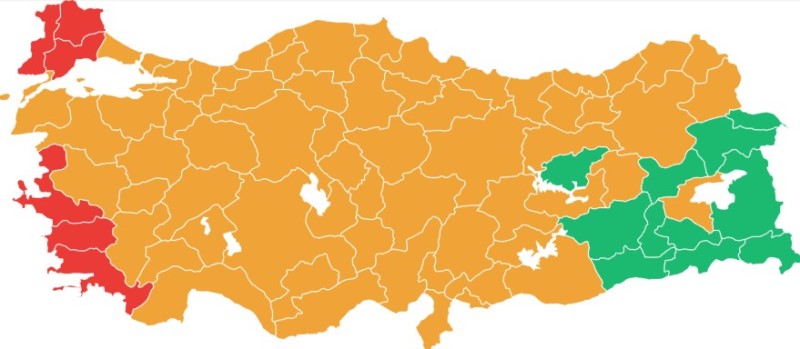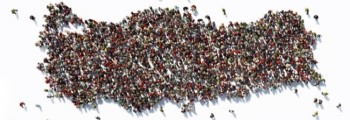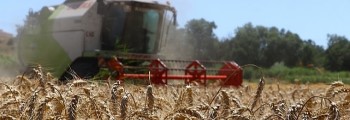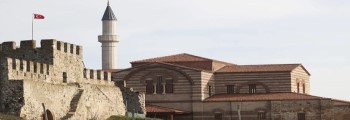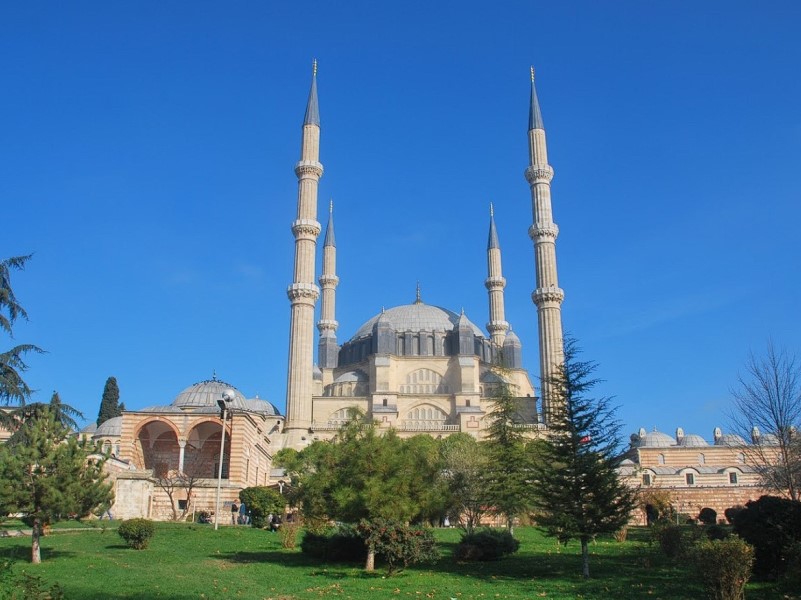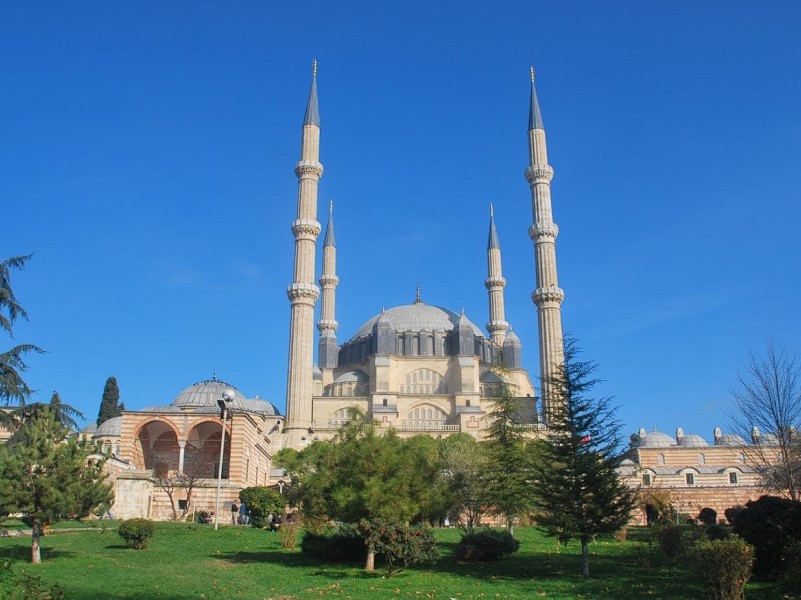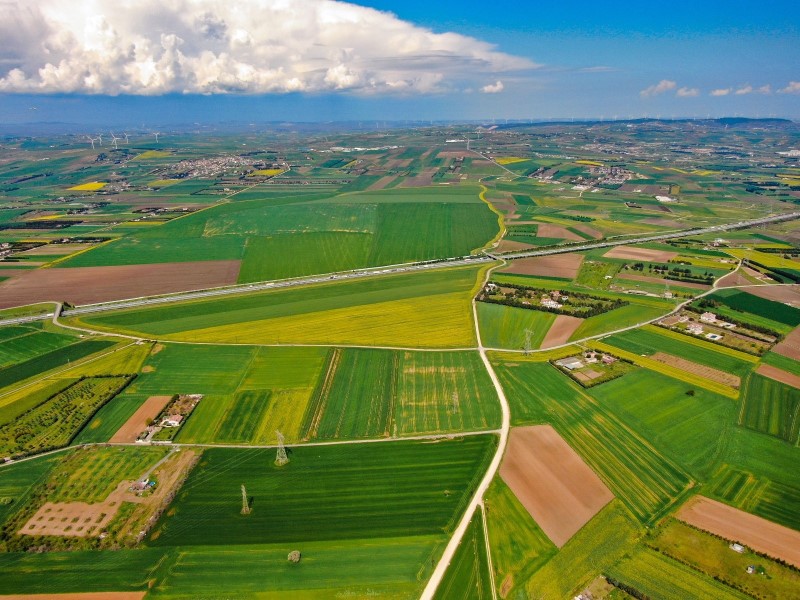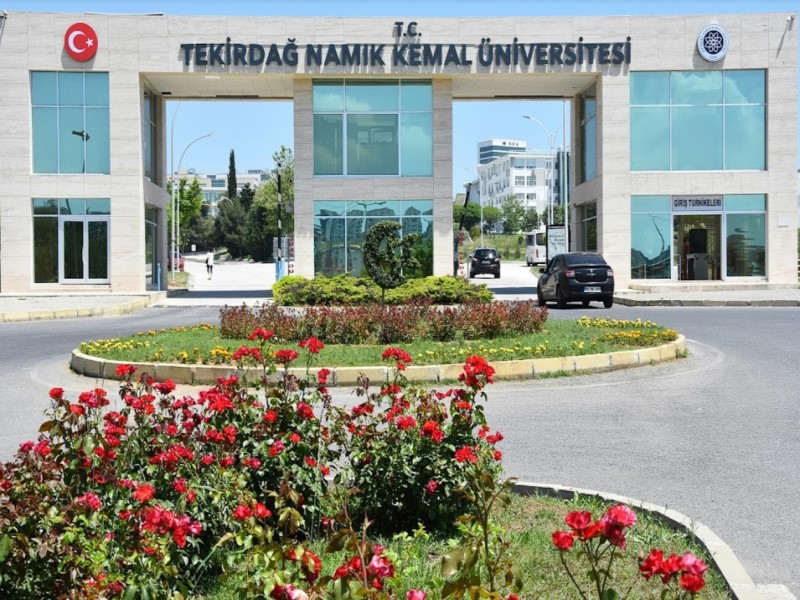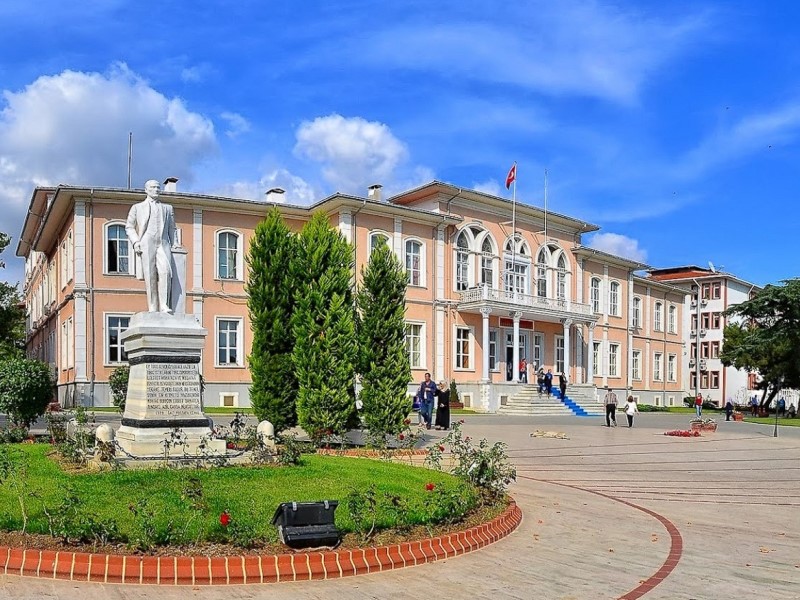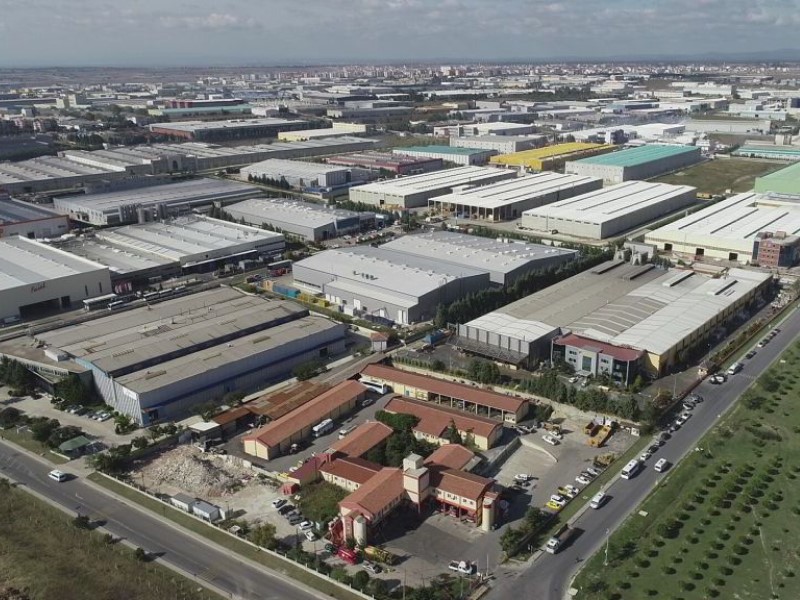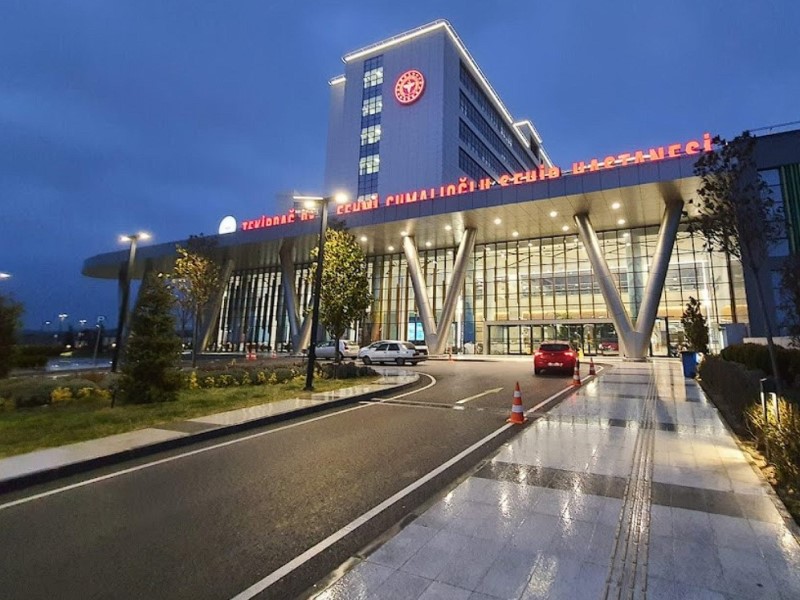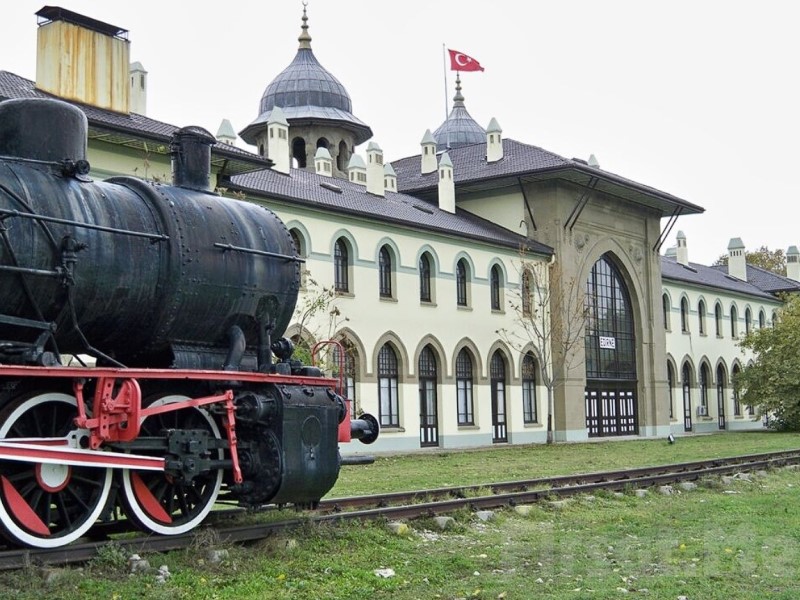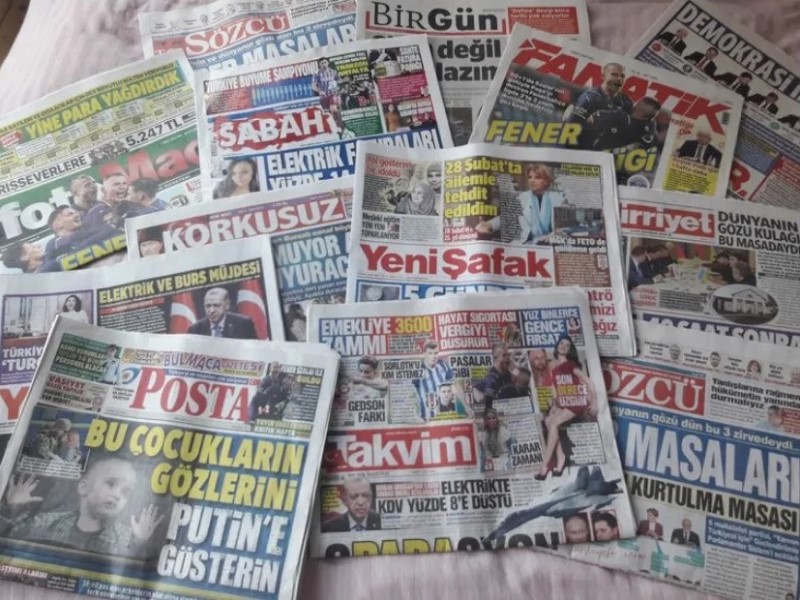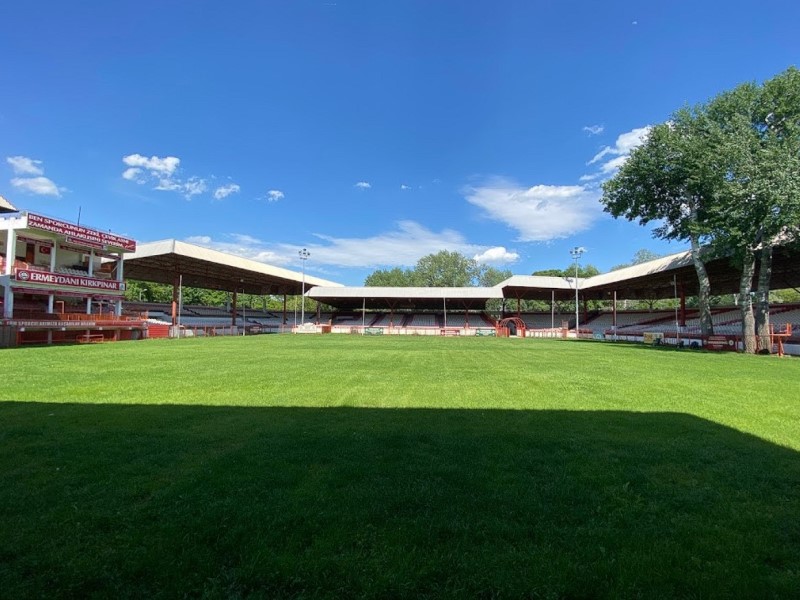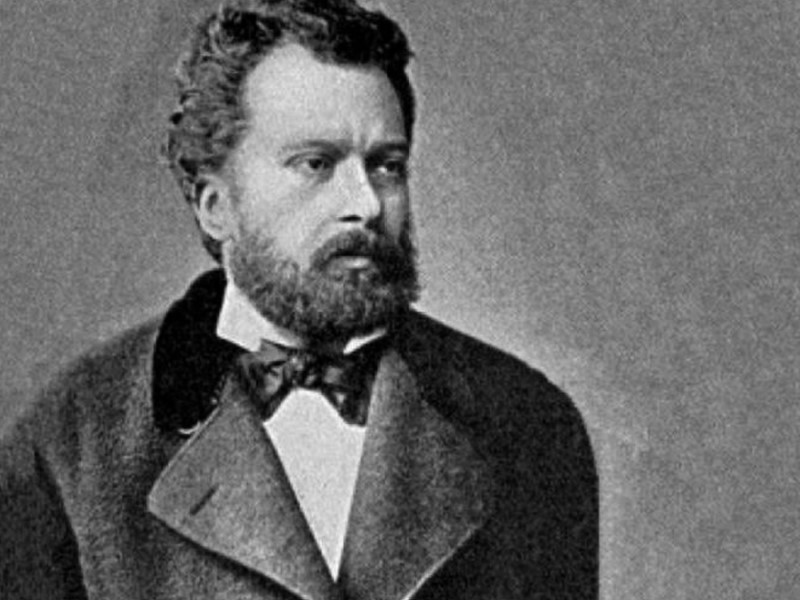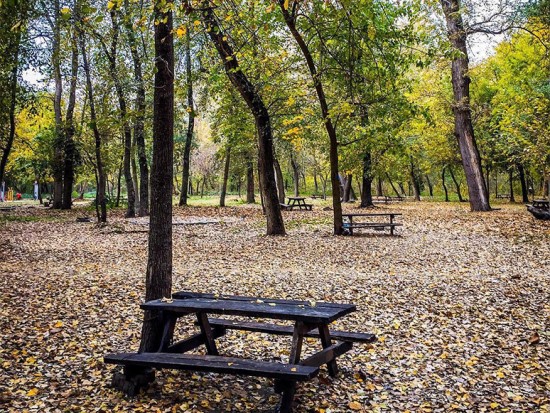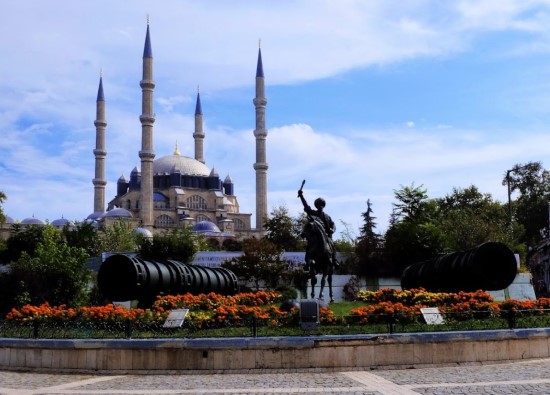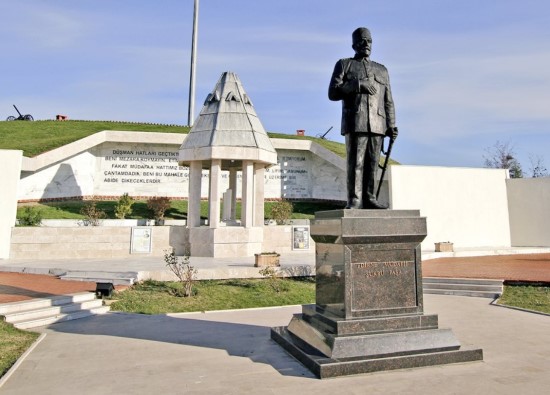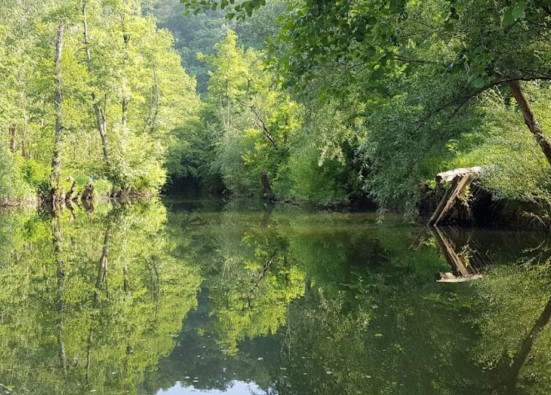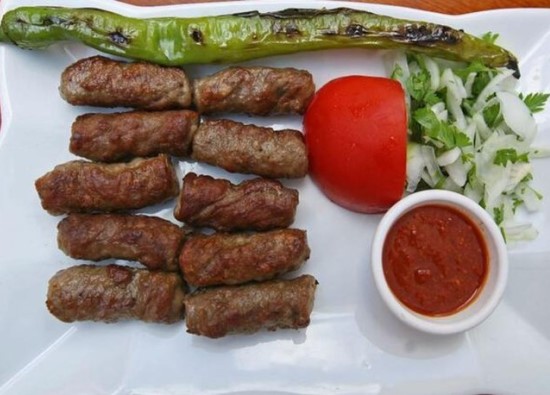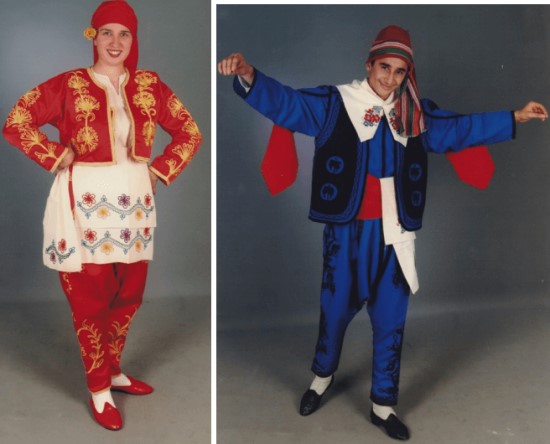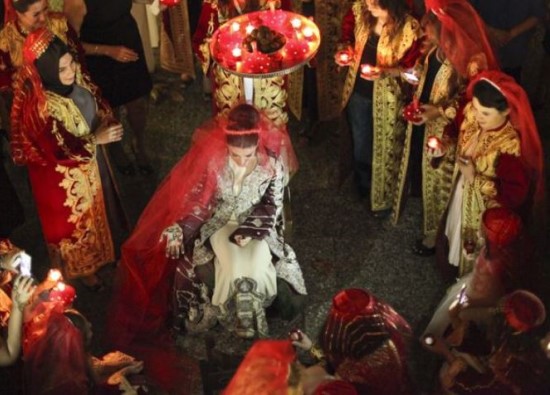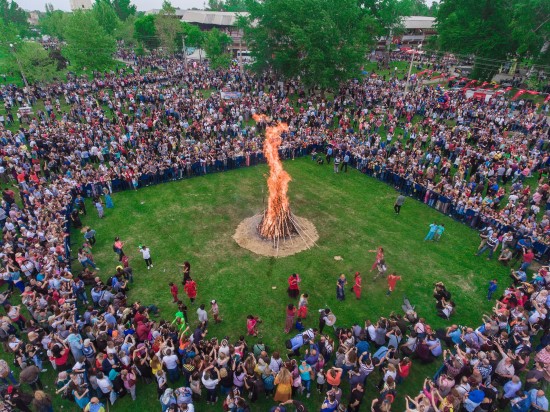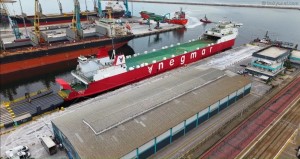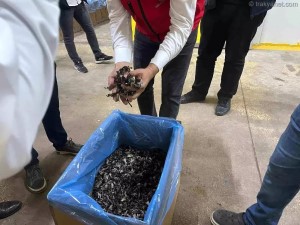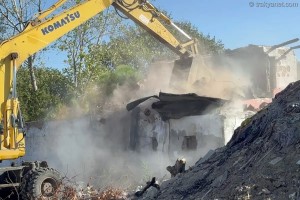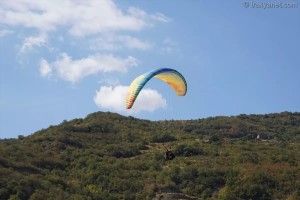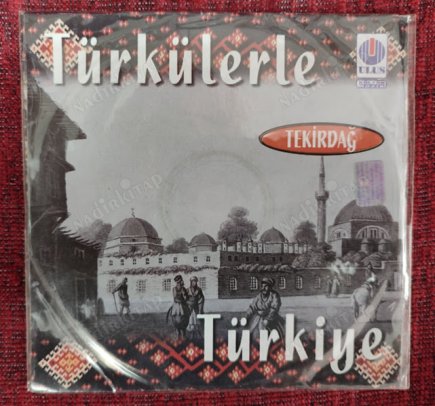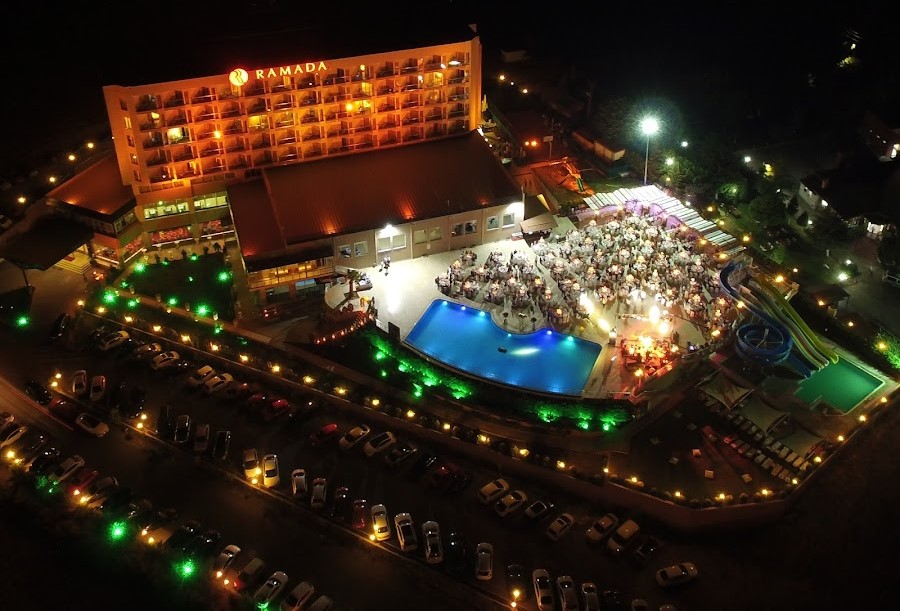Tekirdağ - Tekirdag - Текирдаг - Ραιδεστός
As you travel from Istanbul towards Tekirdag, it's possible to see hints of Tekirdag's identity on both sides of the road. While the left side of the road is filled with various holiday sites, the right side predominantly displays the colors of dense yellow canola, green wheat, and light yellow sunflowers according to the season. A bit further up, the densely industrial area of Corlu and Cerkezkoy districts becomes evident. This view immediately reveals that Tekirdag is a city caught between agriculture and industry.
At the city entrance, as you pass the hills with a bit of greenery and many new buildings, the summer houses on the left give the impression of a resort town. Upon getting out of the car by the seaside, you can feel the scent of the sea, see restaurants promoting Tekirdag meatballs on the right, the mosque inherited from Mimar Sinan, and on the left, the newly bustling Tekirdag Port along the promenade, which otherwise appears empty except for a few simple businesses. The large shopping malls, heavy vehicle, and pedestrian traffic usually seen in rapidly developing industrial cities are yet to be felt in Tekirdag.
The effects of the concentrated industrial area in Corlu and Cerkezkoy have not yet reflected on Tekirdag's center. The center of Tekirdag carries the characteristics of the more agriculturally dense western part of Thrace, rather than the east.
The advantageous position of Tekirdag in tourism can easily be noticed after a daily trip. The exile house of Rakoczi, the national hero of the Hungarians; the ethnography museum; many old houses that are on the verge of collapse; the governor's office where the first steps of the alphabet revolution were taken; Sarkoy, with its vineyards and wine, famous for its Blue Flag, but positioned as a holiday town; Ucmakdere with its paragliding events, beautiful view, and lack of facilities; Karacakilavuz with its handwoven products; the 19th Brigade, the first place where soldiers gathered for the magnificent resistance in Canakkale, and many other historical and cultural assets make Tekirdag uniquely beautiful. Despite these beauties, Tekirdag is a city that has only been able to market its meatballs due to shortcomings in promotion and infrastructure in tourism.
Tekirdağ is one of three provinces in northwestern Türkiye, located north of the Sea of Marmara and entirely within Thrace. It has a surface area of 6,313 km².
Tekirdağ province, bordered by both the Sea of Marmara and the Black Sea, is one of only six provinces in Türkiye with coastlines on both seas. Located north of the Sea of Marmara and entirely within Thrace, Tekirdağ is bordered to the east by the districts of Silivri and Çatalca, and to the north by the districts of Vize, Lüleburgaz, Babaeski, and Pehlivanköy, all of Kırklareli province. It has a 1.5 km coastline on the Black Sea to the northeast. Located on the Thrace-Kocaeli Peneplain, Tekirdağ province's landforms include 75.2% plateaus, 15.5% plains, and 9.3% mountains. Generally, there are no high mountains, steep slopes, or valleys. Coastal plains along the Sea of Marmara are covered with alluviums carried by rivers. The plateaus are characterized by erosion surfaces. Istranca lies in the north, and Tekir Mountain, Koru Mountain, and the Ganos Mountains lie in the south.
Tekirdağ falls into the subhumid climate type, according to the hydrographic regions identified by general humidity indices. Its precipitation regime falls within the Mediterranean precipitation regime. The Tekirdağ coastline, influenced by the Mediterranean climate, experiences hot summers and mild winters. The coastal strip encompassing the Ergene basin has a more continental climate. Precipitation is generally rain, with little snow. The moderate climate facilitates agriculture. The lowest average precipitation in Tekirdağ occurs in August and the highest in December. The coastal strip between Şarköy and Kumbağ exhibits Mediterranean climate characteristics. This characteristic stems from the mountains running parallel to the coast in the north and the warming effect of the sea.
The inland areas are under the influence of a continental climate. The winters are particularly influenced by the northern European climate. Therefore, it lacks a distinct climate type. Summers are generally hot and dry, like those in the Mediterranean. Because the Siberian anticyclone reaches these areas from the Balkans, winters are dry and freezing. The inland areas lack the moderating effect of the Marmara Sea. In July, the temperature along the coast in Tekirdağ province center is 25 degrees Celsius, while in Çorlu and the surrounding areas, it is around 26-30 degrees Celsius.
Tekirdağ is very windy in both summer and winter. The dominant and constant wind is the northeasterly wind, while the second most important wind is the southerly wind. As long as there is high pressure in Central Europe, the northerly wind blows strongly in Thrace and Tekirdağ. When the pressure decreases, the northerly wind blows only during the day and becomes a breeze.
Because the southerly wind enters Thrace from the Meriç Valley, it blows heavily in inland districts like Çorlu. It is frequent but short-lived in Tekirdağ and its coastline. Breezes in March, April, and May bring rain.
Tekirdağ is quite poor in vegetation. Its most distinctive feature is the maquis and shrubland that develops in accordance with the climate type on the slopes overlooking the Sea of Marmara. In the inland areas, partly under the influence of the continental climate, oak species that shed their leaves in winter, hornbeam, ash, silver linden, plane tree, and elm trees are found. Willow is the characteristic tree along the rivers.
In Tekirdağ province, 25% of the gross agricultural production value comes from livestock. While there is a decrease in the number of pasture-based livestock, there is an increase in the number of cattle.
The fact that all kinds of relations between Anatolia, the Near East, and Europe, such as migration, invasion, trade, culture, and exchange, took place through Thrace has been a significant characteristic of the region, both in the past and today.
In Tekirdağ, settlements dating to the upper levels of the Old Stone Age have been found in caves in the Güneş Kaya and Güngörmez valleys in the Saray district (40,000-10,000 BC). Stone axe production centers dating to the earliest land settlement period (Neolithic) have been found in the Şarköy district (8,000-5,000 BC). The Tekirdağ Museum Directorate has identified Chalcolithic Age settlements (Top Tepe 4,300 BC) in some river mouths along the Marmara Sea, as well as contemporary settlements from the 1st and 2nd levels of Troy along the coast. (Early Bronze Age I-II 3,000-2,400 BC) There were communities in Thrace, defined as Proto-Thracians, with much lower levels of social organization, who came to Thrace with a wave of migration between 1400 and 1,000 BC.
While the Thracians lived as nomadic communities, colonists from Samos, arriving from the Aegean islands in the 8th-6th centuries BC, established colonial cities along the shores of the Sea of Marmara. The most important of these are Perinthos (Marmara Ereğlisi) and Bisanthe (Barbaros), located within the borders of present-day Tekirdağ. Between 546 and 430 BC, the Thracian region was invaded by Persians from the east and remained under Persian rule.
In 352 BC, King Philip II of Macedonia, during his campaign against Thrace, conquered the region from Ipsala to the vicinity of Marmara Ereğlisi. (Early Bronze Age I-II 3000-2400 BC) Between 1400 and 1000 BC, a wave of migration came to Thrace, and in Thrace, there were communities with a much more backward level of social organization, known as Proto-Thracians.
While the Thracians lived as nomadic communities, colonists from Samos, arriving from the Aegean islands, established colonial cities along the shores of the Sea of Marmara in the 8th-6th centuries BC. The most important of these are Perinthos (Marmara Ereğlisi) and Bisanthe (Barbaros), located within the borders of present-day Tekirdağ. Between 546 and 430 BC, the Thracian region was invaded by Persians from the east and remained under Persian rule.
In 352 BC, King Abdülhamid II of Macedonia conquered the region. During his campaign against Thrace, Philip occupied the coastal areas from Ipsala to the Marmaraereğlisi region. Perinthos (Marmaraereğlisi) offered fierce resistance. Alexander the Great, who succeeded Philip II and campaigned as far as India, captured Perinthos (Marmaraereğlisi). After his death, the region came under Lysmokhus' rule. The region changed hands repeatedly between the Macedonian and Odrysian kings until it came under Roman rule in 30 BC.
Tekirdağ entered history in the late Roman period in the 3rd century AD under the name Rhaedestus and was known as Rodosto during the Byzantine period. After the Ottomans captured Tekirdağ from the Byzantine Tekfurs in the 14th century, the name Rodosto evolved into Rodosçuk. Rodosçuk, which was called by this name until the 18th century, later began to be called "Tekfurdağı", which was claimed to be given to the Byzantine feudal lords, and after the Republic, it was renamed Tekirdağ as a province in 1927.
Tekirdag
| Area | 6.190 km² |
| Altitude | 30 m |
| Population 2024 | 1.187.162 |
| Telephone Area Code | 282 |
| License Plate Code | 59 |
| Postal Code | 59XXX |
| Governor of Tekirdag | Recep Soyturk |
| Tekirdag Metropolitan Municipality Mayor | Candan Yuceer |
| Update | |
| View | 1.733 |
| District Populations Tekirdag (2024) | ||
|---|---|---|
| Order | Districts | Population |
| 1 | Corlu | 300.296 |
| 2 | Suleymanpasa | 223.068 |
| 3 | Cerkezkoy | 218.926 |
| 4 | Kapakli | 147.610 |
| 5 | Ergene | 68.526 |
| 6 | Saray | 51.275 |
| 7 | Malkara | 50.727 |
| 8 | Sarkoy | 34.091 |
| 9 | Marmaraereglisi | 32.104 |
| 10 | Muratli | 30.455 |
| 11 | Hayrabolu | 30.084 |
| Total Population (2024) | 1.187.162 | |
Detailed statistical data of the Tekirdag region are available on our pages.
Province, district, town, neighborhood, and village population information
Immigration information received and given by Thracian settlements
Detailed statistics on the livelihoods of the Thracian people
Tourism data of the Tekirdag region
Health personnel statistics with birth and death information in Tekirdag
Results of the Turkish parliamentary general elections
Other statistics related to the Tekirdag region
All kinds of detailed information about Thracian settlements
History of Tekirdag
Geography of Tekirdag
Tekirdag educational institutions
Tekirdag administrative administrations
Tekirdag economy
Tekirdag health institutions
Tekirdag transportation information
Tekirdag press organizations
Tekirdag sports infrastructure and clubs
Celebrities born in Tekirdag
Tekirdag Tourism Information
Transport and Infrastructure Minister Abdulkadir Uraloglu announced that the Bandirma-Tekirdag Train Ferry Line, now operational, will provide an annual freight carrying capacity of 2.8 million tons. It was stated that the line will strengthen its position in international transportation.
Don't let them build houses on high, high hills
Don't let them give their daughters to distant lands
Let them not look down upon the only one, the mother
Let it be known to the flying birds as well
I miss my mother
Both my mother and my father
I miss my village
If my mother had a sail, she would open it and come
If my father had a horse, he would ride it and come
If my siblings knew the roads, they would come
Let it be known to the flying birds as well
I miss my mother
Both my mother and my father
I miss my village
Hattuşa Vacation Thermal Club Saray, Tekirdag, built in 2022, is located in the Saray district. Enjoy a delightful holiday with its two indoor swimming pools. The property offers bed and breakfast service.
Updating
Data entry on our pages is ongoing and will be published as soon as possible.
Tekirdag Photos
